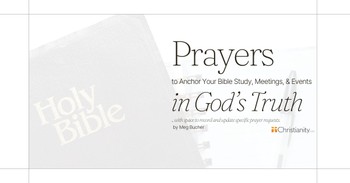Many of us are familiar with Moses’ wife, Zipporah. He met her during his years away from Egypt (Exodus 2:1). Moses had killed an Egyptian by accident and fled to the Midianites since the Pharaoh sought to kill Moses. There, Moses met a man named Jethro and received Jethro’s daughter Zipporah in marriage. But did Moses have a second wife? A Cushite named Tharbis?
The name Tharbis isn’t mentioned in the Bible; it’s mentioned by a Jewish historian named Josephus. Many readers have speculated that Numbers 12:1-10 hints at Moses having a second marriage. Did Tharbis exist, or is it another name for Zipporah? Were the Cushites and Midianites different people? And why does this ultimately matter? Let’s explore.
Who Was Tharbis in the Bible?
If Tharbis existed and wasn’t synonymous with Zipporah, we have to look to Josephus rather than the Bible for historical context. Since the Bible’s only hint at a second wife of Moses is the following from the Numbers passage mentioned above:
Interracial Marriage
“Miriam and Aaron began to talk against Moses because of his Cushite wife, for he had married a Cushite.” (Numbers 12:1)
This passage could be interpreted as Miriam and Aaron getting mad at Moses for marrying a second wife. However, the verse doesn’t specify which wife is referred to. Furthermore, plenty of other Israelites married more than one wife, such as Jacob and Lamech. Polygamy always results in broken families in the Bible—and does not fit God’s marriage model for one man and one woman to join together. However, given the cultural context, Aaron and Miriam wouldn’t have critiqued their brother specifically for marrying a second wife. Instead, they would’ve been mad at him for marrying outside his ethnic group.
Although the passage does not explicitly say, “Now Miriam and Aaron were mad at Moses for marrying a non-Israelite,” the heavy emphasis on Cushite, the word being mentioned multiple times, seems indicate why they get mad at him.
God doesn’t like that they’ve questioned Moses, the authority he has placed over Israel. And Miriam and Aaron receive a leprous skin disease due to it.
Cushites vs. the Midianites
So we know that Moses’ wife (or wives) did not come from the people of Israel. What do we know of the Cushites, and do they differ from the Midianites (whom Zipporah is from)?
The Cushites were essentially the Old Testament Ethiopians. They hailed from the northeast regions of Africa. Several Cushites make an appearance in the Bible. Some of these include a messenger of David (2 Samuel 18:32), the father of Shelemiah (Jeremiah 36:14), and the son of Gedaliah (Zephaniah 1:1).
The Ethiopians also played a big role in the early church. After an Ethiopian eunuch is saved (Acts 8), he brings the Gospel to Africa, according to church tradition.
So how does Cush differ from Midian?
The Midianites are sometimes Israel’s friends and sometimes their enemies, depending on the period of history. We know that they likely lived primarily in the territory of the Arabian peninsula, not where the Cushites would have lived. It’s possible but unlikely that the lands could have overlapped. So, given that Moses lived among the Midianites but apparently had a Cushite wife, he may have had two wives.
What Does Josephus Say about Tharbis?
According to Josephus’s account of Tharbis, she was a princess of the Cushites who saw Moses prevail in battle and fell head over heels for him. They are soon married. This apparently happens when Moses still lives in Egypt (before he flees to Midian and marries Zipporah).
We do have to take what Josephus says with a grain of salt. He was a political historian, meaning he often had an agenda in his written works. Many non-biblical historians, such as Herodotus, weren’t always the most trustworthy.
With that said, if Josephus is correct, then Moses married royalty during the period when he was a royal in Egypt. He apparently took that royal wife with him into Midian and later the wilderness (where Aaron and Miriam complained about her).
Did Moses Marry Two Wives?
The Bible isn’t entirely clear on this issue. In fact, at least one passage seems to indicate that Moses only had one wife by the time he returned to Egypt to tell Pharaoh to let the Israelites go (Exodus 4:20).
The Exodus passage says, “one wife” and “his sons.” One could surmise that perhaps Tharbis passed away by this point, leaving Moses with just one wife, Zipporah.
But if that’s the case, why would Miriam and Aaron complain about a Cushite wife by Numbers 12, long after Moses had evacuated the Israelites to the wilderness?
The Bible doesn’t clarify whether the Midianites and Cushites had intermingled during this period or whether Moses married two wives. It’s also unclear whether Josephus could have gotten the timeline wrong and Moses married again after Zipporah died.
Whether Tharbis and Zipporah are two different women or Moses had one wife who was both a Cushite and a Midianite, we can still learn something important here.
What Can We Learn from Tharbis in the Bible?
Moses’ wife (or wives) can offer us many insights into how God worked behind the scenes in the Old Testament.
Lesson #1: God Uses Those Outside of His Chosen People
We can see why God gets angry at Aaron and Miriam for criticizing Moses’ interracial marriage. God did warn the Israelites not to marry the Canaanites, but he forbade them to keep Canaanite pagan idols from entering Israel and seducing people away from him. He never forbids interracial marriage on principle in the Bible. Even when his laws get broken, he finds ways to do something surprising and redemptive.
In Jesus’s own bloodline, we see several non-Israelite women, such as Rahab and Ruth.
Rahab had been a prostitute in Jericho. But because she kept the spies of Israel safe, God not only preserved her but made her a part of Jesus’ genealogy. Ruth was a woman from Moab whose Israelite husband died before her. Her mother-in-law Naomi also became a widow. Ruth vowed to take care of Naomi and go wherever she went. When they moved to Israel, Ruth met her second husband, Boaz. Because of Ruth’s faithfulness to Naomi, she is also grafted into the line of Jesus.
In the Old Testament, God alluded to what he would do in the New Testament. He would ultimately graft every nation into the family of God if they accepted him as their Savior.
Perhaps God got angry with Aaron and Miriam because their criticism ran against his long-term plan to unite the Jews and Gentiles under Christianity. Even in the New Testament, we can see that many Jewish Christians were not on board with this idea. Many went as far as to say that Gentile Christians had to receive circumcision to receive salvation.
Lesson #2: Even Unnamed People Play a Bigger Role in God’s Story
Many people in the Bible don’t receive a name or much information. The Bible mentions the name of Joseph’s wife but nothing else. The rich young ruler who approached Christ (Matthew 19) never gets a name. The naked man who fled the Garden of Gethsemane (Mark 14) never gets a name, though some speculate he was the Gospel’s writer.
If you’ve ever felt forgotten or gone nameless in God’s story, know that every person listed and unlisted in the Bible plays a role in God’s grand story.
This hearkens to the passage of Paul about how everyone makes up the body of Christ. Every cell, every muscle, every bone makes up the unique 2000-year history we have of the church. Do not discount the role God has for you in the story. Whether you go named or unnamed, like Tharbis, you have a distinct calling for your life. Listen to that calling, and the ultimate calling for all Christians, to spread the Gospel (Matthew 28). And to continue to unite all nations into the family of God.
Photo Credit: ©Patrick Schneider/Unsplash
Hope Bolinger is an acquisitions editor at End Game Press, book editor for hire, and the author of almost 30 books. More than 1500 of her works have been featured in various publications. Check out her books at hopebolinger.com for clean books in most genres, great for adults and kids. Check out her editing profile at Reedsy.com to find out about hiring her for your next book project.
This article is part of our People of Christianity catalog that features the stories, meaning, and significance of well-known people from the Bible and history. Here are some of the most popular articles for knowing important figures in Christianity:
How Did the Apostle Paul Die?
Who are the Nicolaitans in Revelation?
Who Was Deborah in the Bible?
Who Was Moses in the Bible?
King Solomon's Story in the Bible
Who Was Lot's Wife in the Bible?
Who Was Jezebel in the Bible?
Who Was the Prodigal Son?

.jpg)

.jpg)
